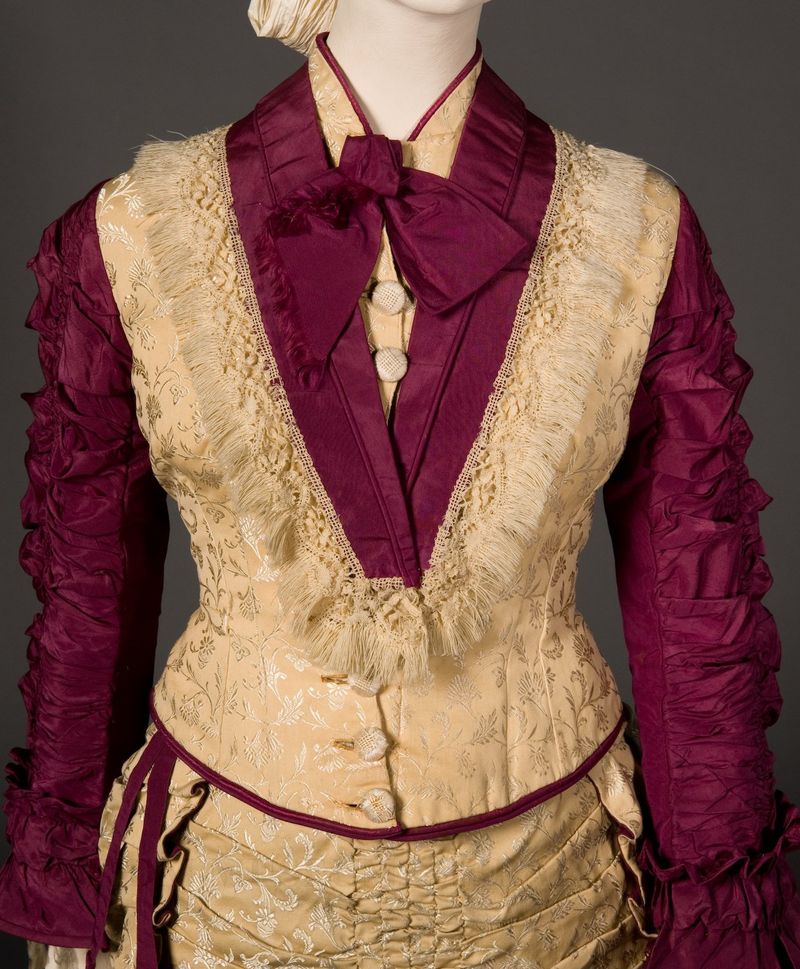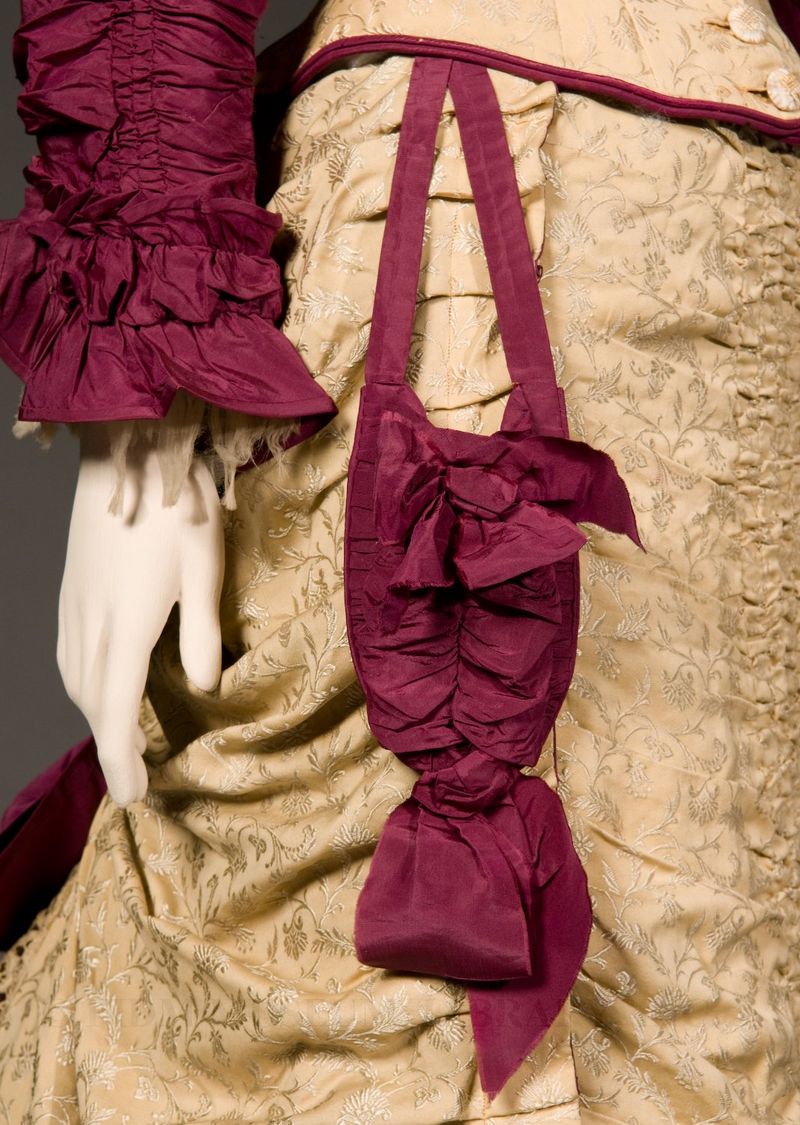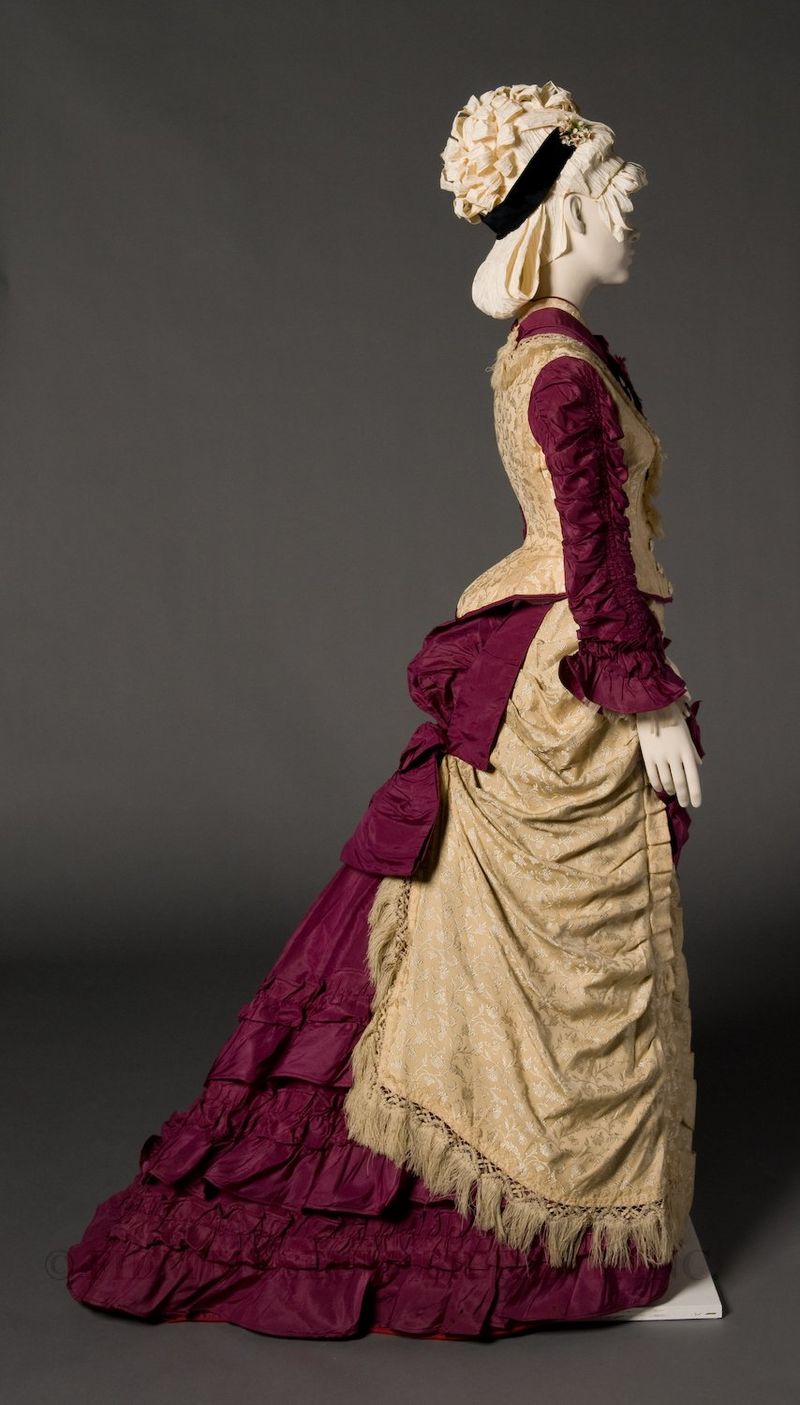Reception dress, c. 1876
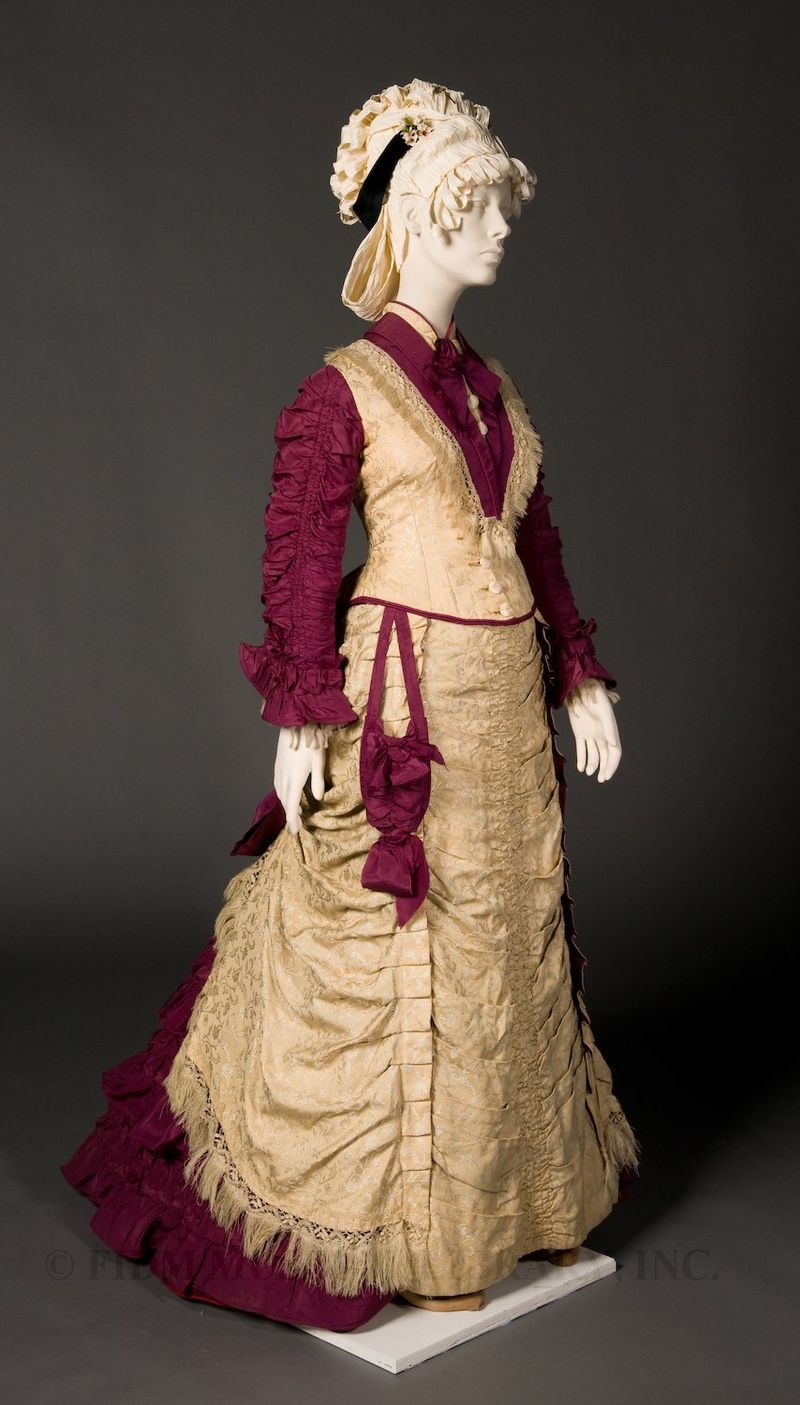 Reception dress
Reception dress
1876-77
Maison Touin, Paris
Silk faille, wool & silk brocade, linen lace
Gift of John Kauke
82.405.2AB
Made by a Paris dressmaker, this purple and cream reception dress could have walked right off a fashion plate. The styling and details are up to the minute, a reflection of high fashion c. 1876. Since the reign of Louis XIV in the late 17th century, Paris had been the fashion epicenter of the Western world. In 1858, when Charles Frederick Worth and business partner Otto Bobergh established Maison Worth et Bobergh at 7 Rue de la Paix, this street and its environs became the heart of Paris' fashion industry. Maison Touin, the house that created this dress, was located at 3 Rue Ventadour, only a few blocks away from the Rue de la Paix and well-within the stylish orbit of the famous street.
By the middle of the 1870s, two piece dresses were the vogue. The most popular bodice style was the cuirass, which dipped low at the front and back, and high over the hips. A curved hem was the result; on the bodice pictured here, the curve is accented with purple trim. The deep V neckline is trimmed with a layer of fringe and finished with a bow. Together, two-tone bodice and layered neckline impersonate the look of a blouse and vest. Multiple layers and fabric types create a sense of depth and luxury.
Dresses featuring contrasting colors and different materials were popular during the 1870s. Here, brocaded cream silk/wool is paired with purple silk faille. Sleeves and underskirt were usually cut from the same fabric, while the faux-vest and overskirt were made from a different, also matching, fabric. This 1876 fashion plate features a cream and blue gown of a similar style. A writer for Godey's Lady's Book pointed out the sensible economics of these so-called "combination costumes." The popularity of dresses made from multiple fabrics, "afford[ed] admirable plans for making up old dresses, as there is no necessity to match the materials. A partly worn silk skirt can be taken from one dress, enough velvet for sleeves from another, while a little new matelasse, woolen goods or striped velvet must be purchased for the overdress."1
Chatelaine pockets were popular between about 1875-1877. Both the fit and the styling of mid-1870s dresses demanded this exterior pocket. The fashionable skirt silhouette was flat in front, clinging closely to the hips and upper legs; this narrow line that would have been interrupted by a pocket. Additionally, the fashionable overskirt, pulled to the sides and fastened at the back, would have made sideseam pockets inaccessible. Thus, pockets became another opportunity for fashionable display. Like the pocket pictured here, chatelaine pockets were usually placed off-center and worn one at a time. Chatelaine purses were also popular and had could be switched between different ensembles.
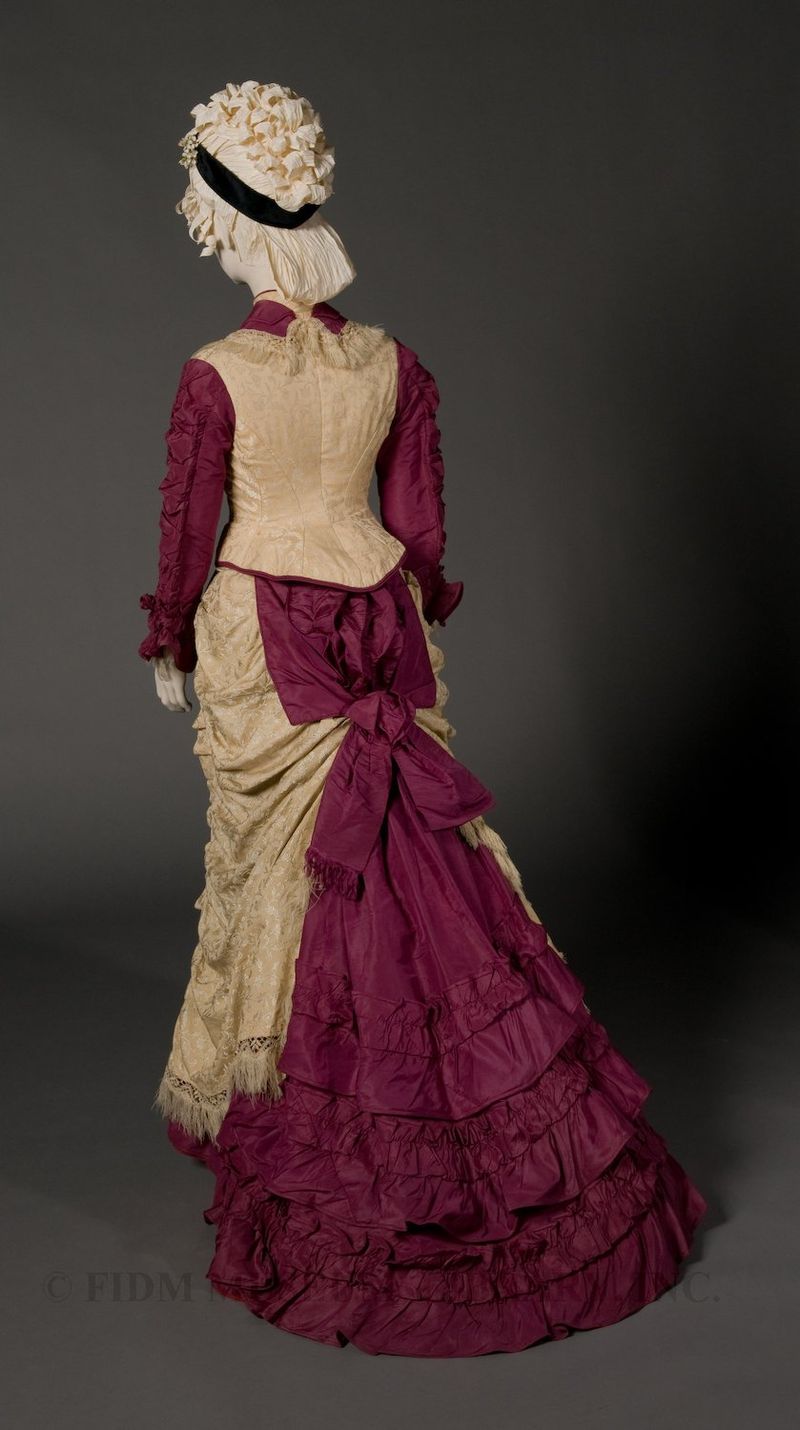 82.405.2AB back detail
82.405.2AB back detail
The image above emphasizes the poufs, ruffles and layers that comprise the train of this dress. Placed too low to be called a bustle, the purple pouf at the top of the skirt exaggerates the female anatomy. Framed by a purple bow, the bouffant pouf descends into a cascade of ruffles, ending in a short train. Trains of varying lengths were a common feature of dresses during the latter half of the 1870s. Because of their inherent impracticality, trained dresses indicated that the wearer was a woman of leisure, not one of the working masses.
1 "Fashions." Godey's Lady's Book and Magazine. Jan 1876: 99.
